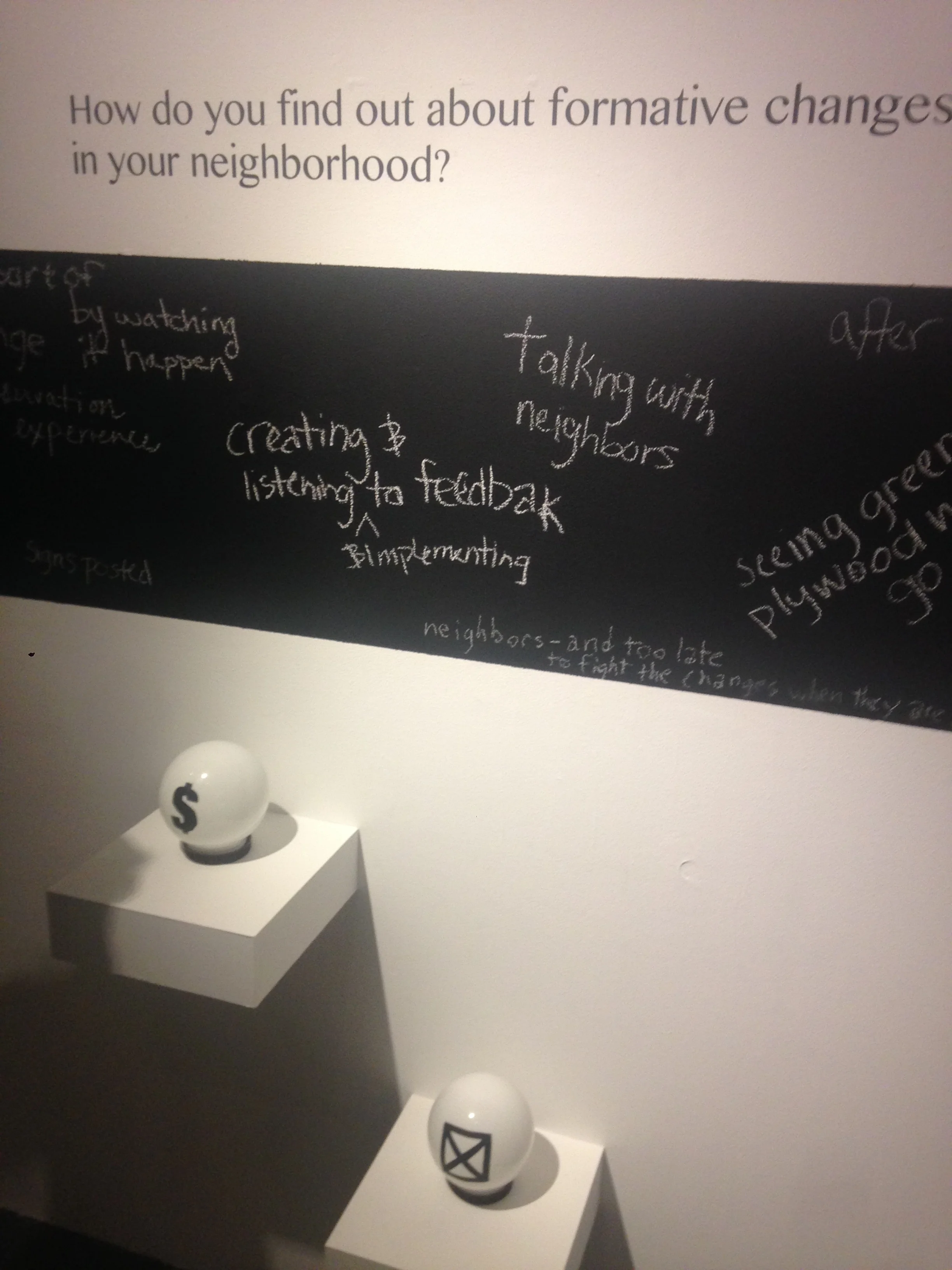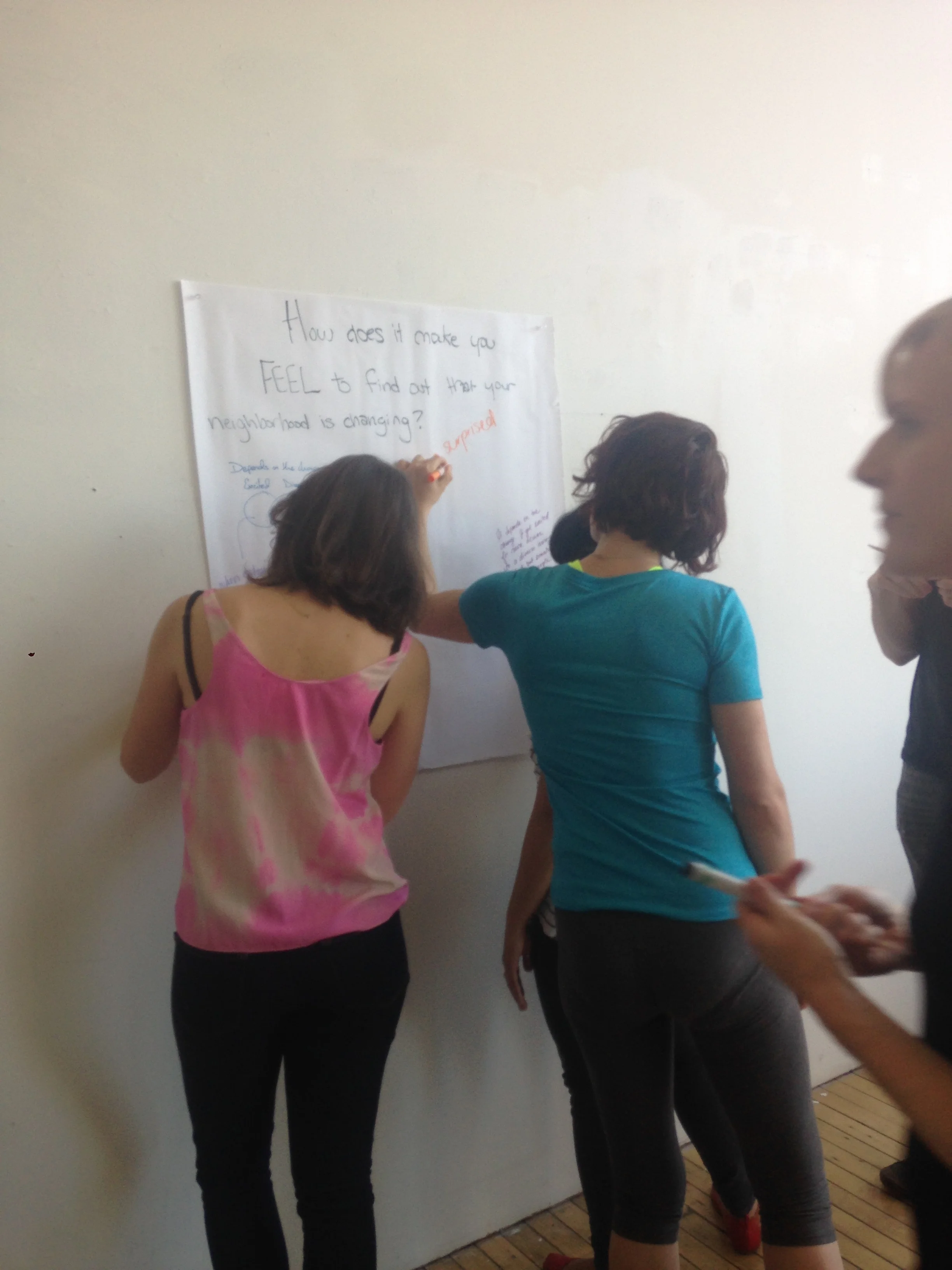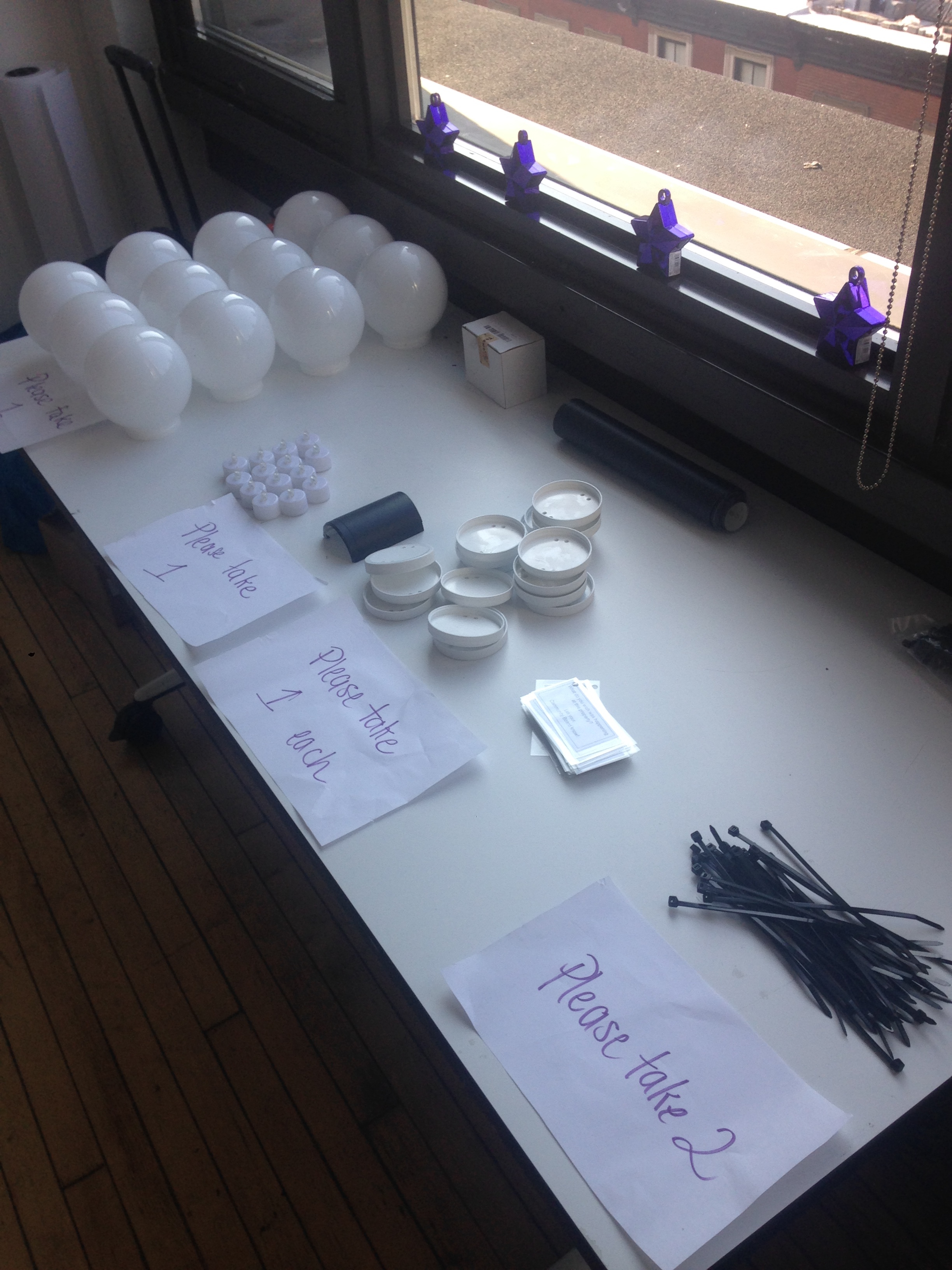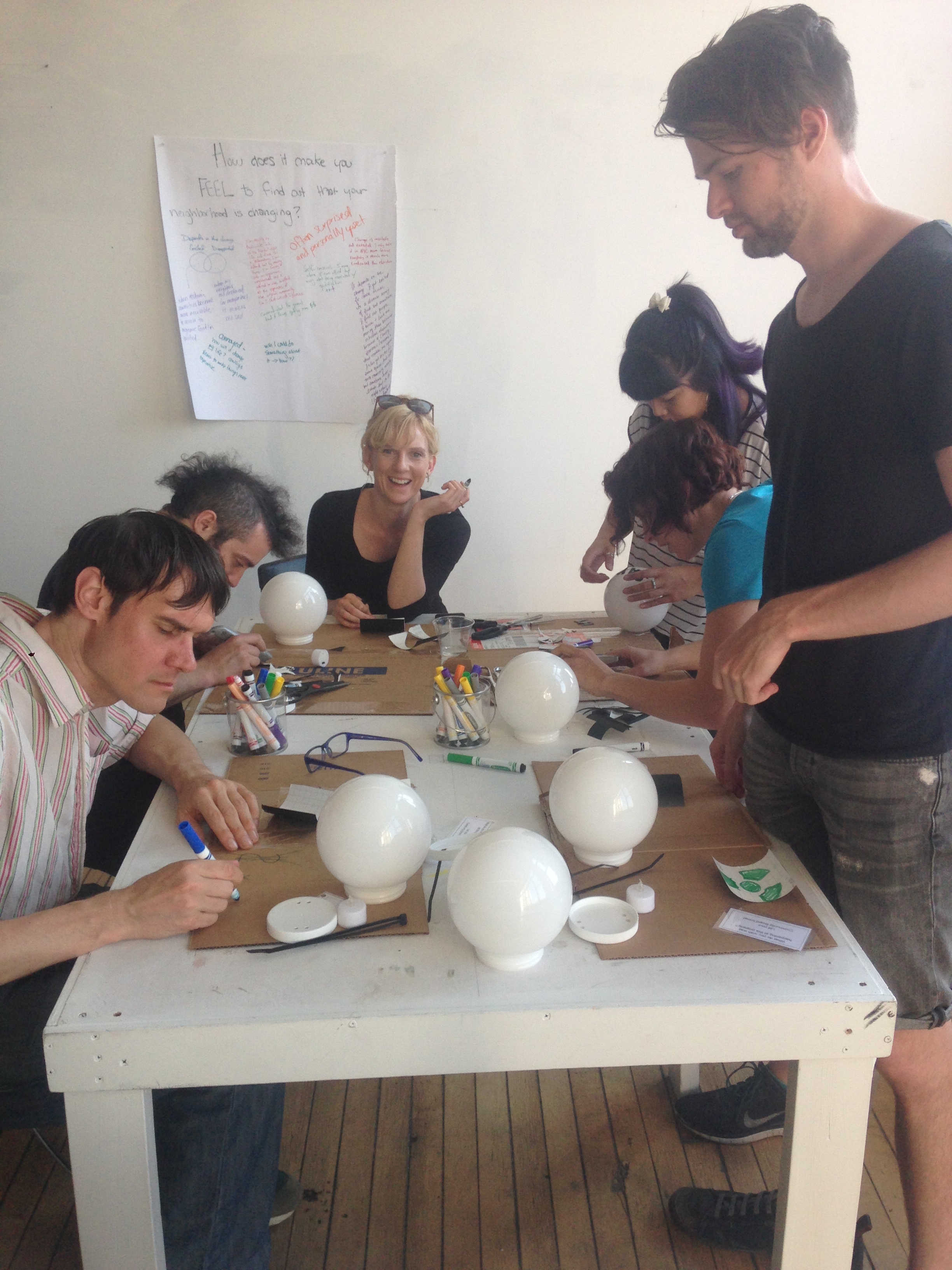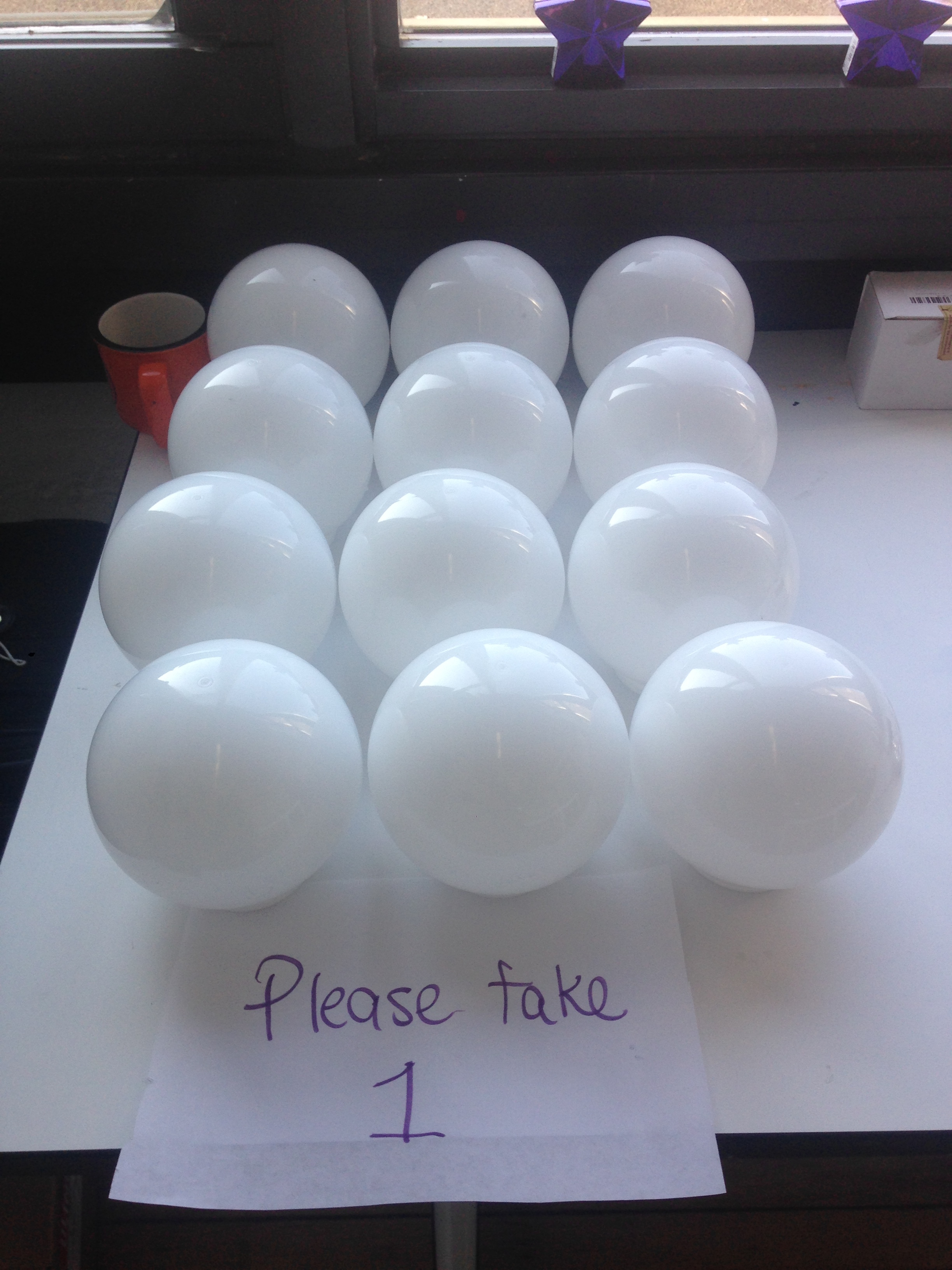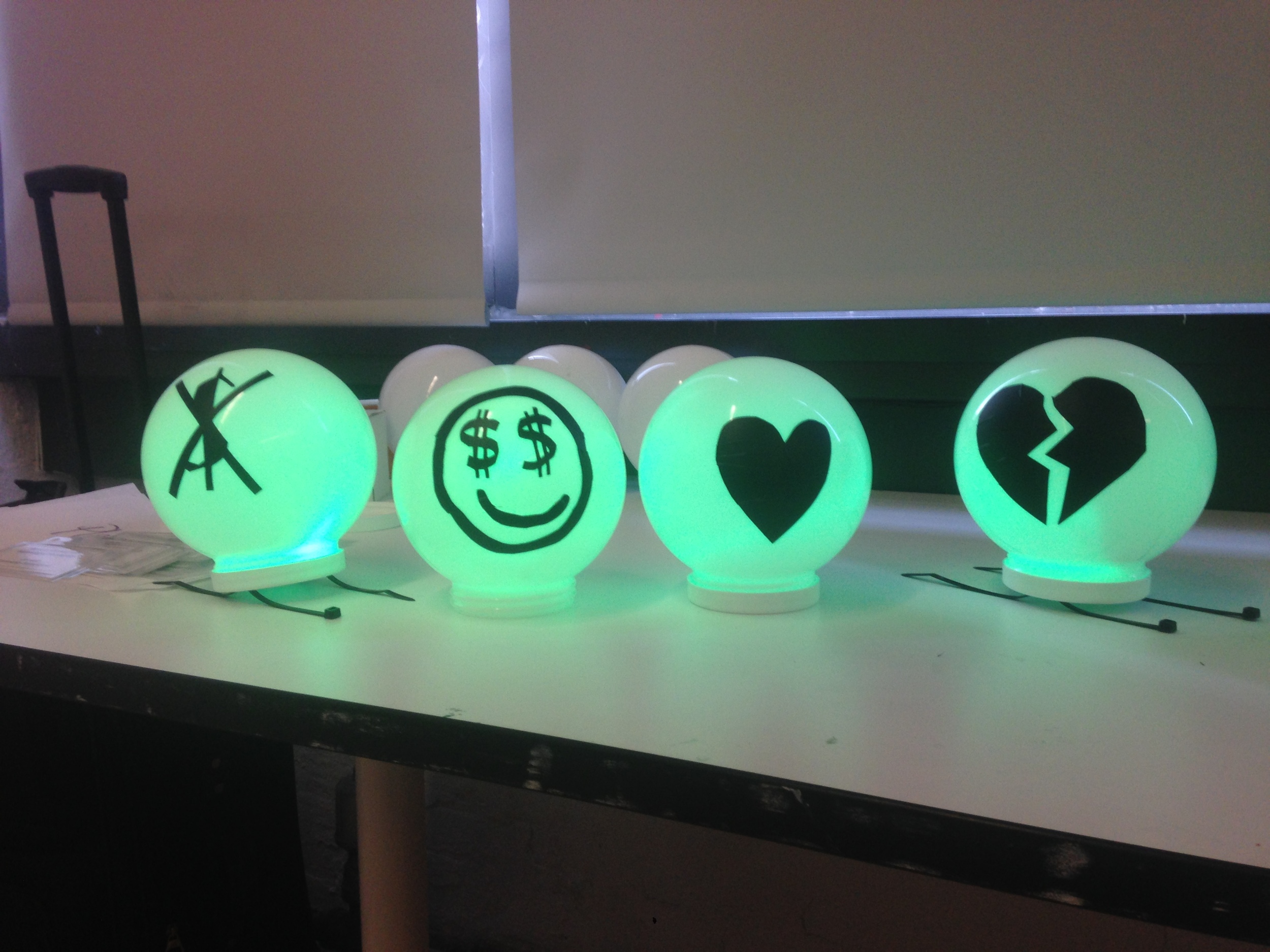#IlluminateChange
Have you noticed a lot of property changes in your neighborhood recently? Are the homes of longtime residents being turned into luxury condos? Are mom & pop shops shuttering their doors while slick coworking cafes open up?
Do you wish you could do something about it?
Download the #IlluminateChange toolkit!
The toolkit gives you the power to influence changes where you live. It shows you how anyone can host a community dialogue about change, and provides instructions for making iconic green lanterns to put at sites of change around your neighborhood.
Once you start these activities, civic leaders will take note, and begin to listen to what your community wants to say. From there, a smarter plan for change can develop.
Participants at a teach-in hosted by NYU in June 2016 created these icons of gentrification and neighborhood change.
Project Background
At street level in Bed-Stuy in Brooklyn, there is rarely a physical sign of impending neighborhood change until the very moment of change. Real estate investors list properties for sale without public signage, or put the word out quietly in secret channels until a buyer is found privately. Tenants get evicted when they didn’t even know the property was for sale. Neighbors only find out that construction will begin next door on the day barriers are installed and demolition crews arrive. No one can talk about what is being built behind the barrier other than its indecipherable zoning code. Community boards review business permits behind closed doors at unpublicized and irregular meeting times, and misinformation about new businesses travels via word of mouth like a game of telephone. All of this amount to reactions of surprise (“I had no idea!”), anger (“Why would they do this to us?”), and hopelessness (“It’s too late to change.”). But it doesn’t have to result in helplessness. The residents of New York City do not have to be victims of information injustice.
Information injustice occurs when government systems privilege knowledge to specific players, making it inaccessible, illegible, or untimely to the general public including the communities the knowledge directly impacts. In Bed-Stuy and other New York City neighborhoods, property information problems include readability issues caused by indecipherable permits, privileged access to property information, and poor dissemination of information about planned changes. Property information cannot be considered legitimately public if only a few can find it or understand it. But a well-informed public jams the schemings of capitalist investors, who leverage ignorance to fast-track significant property changes without resistance. Such information injustice cripples the public's ability to enact the progress and changes we desire.
To resist the hegemony of ownership and forces of gentrification in New York City, property information must be accessible, legible, and timely. A lack of information about what is happening to spaces and places leads to a sense of confusion, trauma, and insignificance which is toxic to achieving a just and equitable community.
"Illuminate Change" is a project designed to provoke community dialogue about property changes with official government representatives via existing channels for engagement. By collectively creating and placing highly visible lanterns at sites of significant change along with an information card, community members learn about the hidden systemic forces at play behind neighborhood change, recognize the imbalance of power and access in property information, and begin to pressure their representatives for more just property information policies. In the long term, these participatory activities develop more resilient communities and facilitate neighborhood self-determination.
